Just to show where I want to go to: These are all areas and lines mentioned above. The labels are calculated with an algorithm similar to the labels of lakes, but I try to avoid horizontal lines.
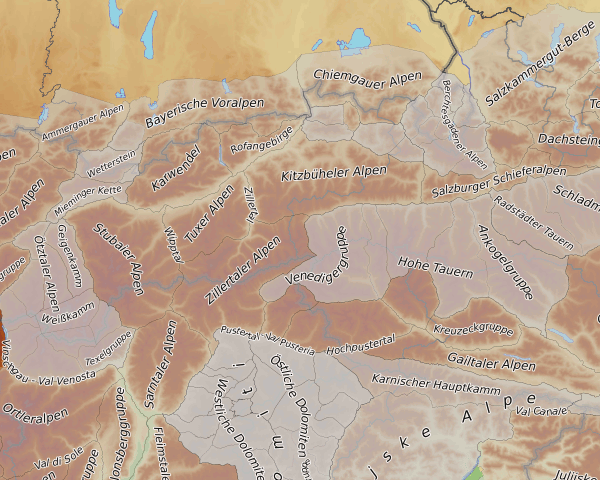
We also render natural=valleys which are mapped as areas, so Valle di Sasso Bisòlo is shown and also Valle di Preda Rossa, which is a area.
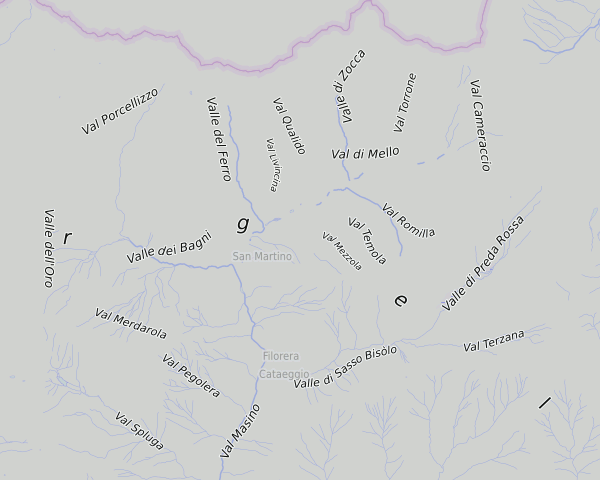 (this region and of course the "rgel"-rest of "Bergell" shoud disapear in that zoom level)
(this region and of course the "rgel"-rest of "Bergell" shoud disapear in that zoom level)
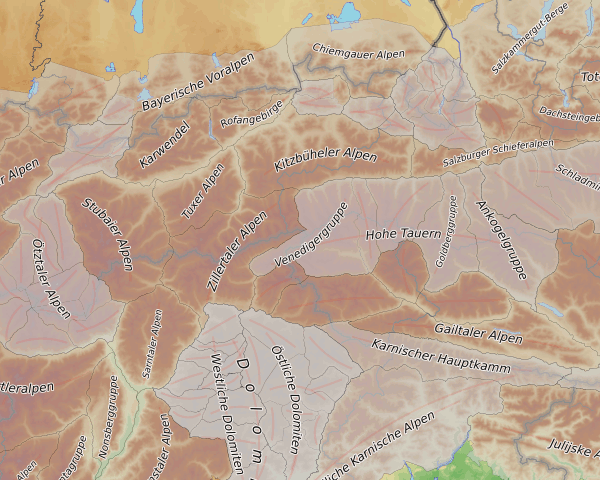

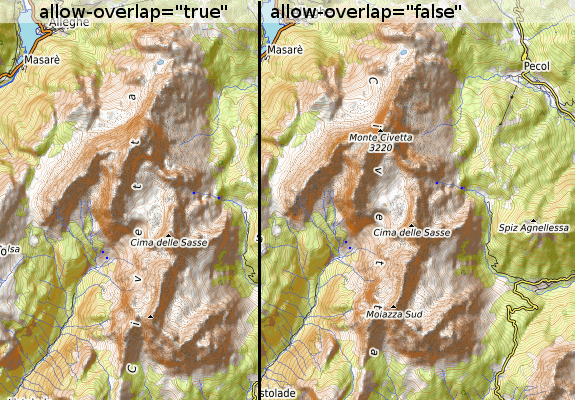
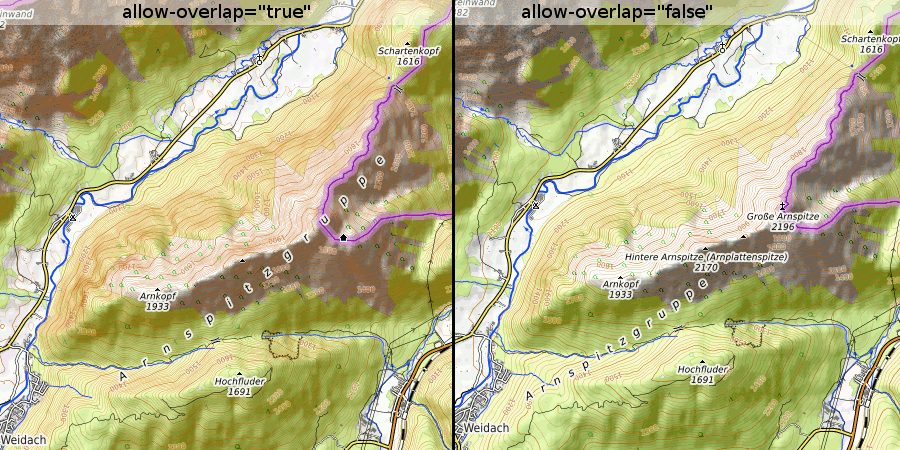
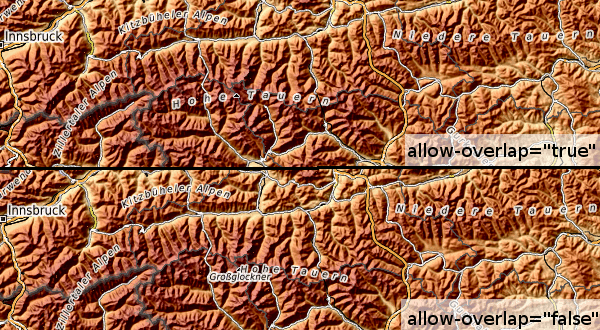
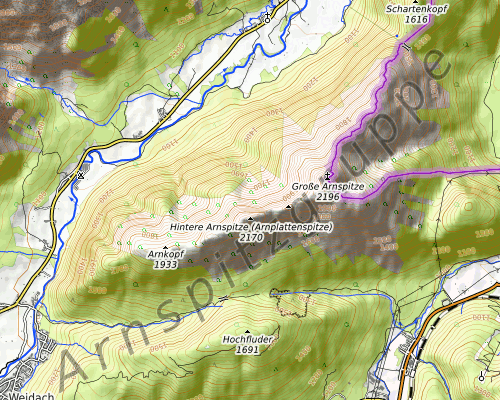
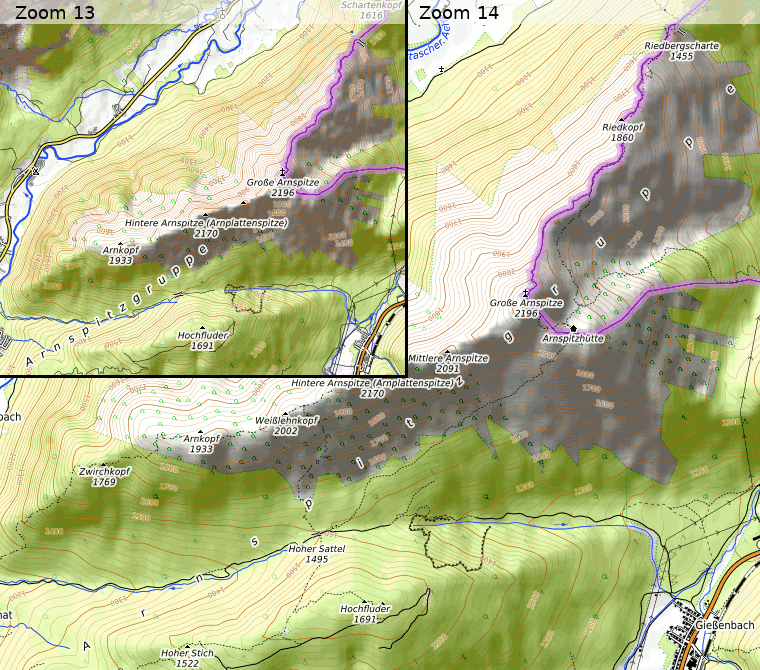
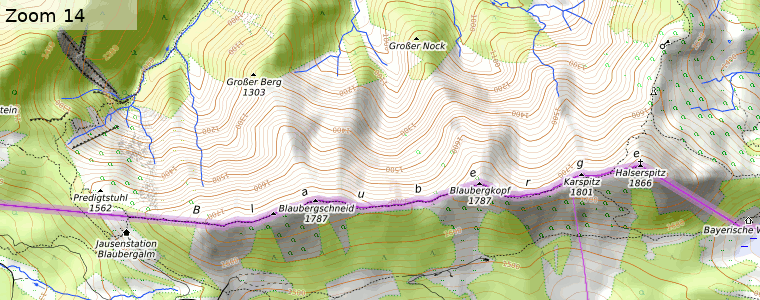
I collect some ideas on how we could render mountain regions and natural areas. After the next update we have region:type in the database (#164)
What else belongs to this group? We have
Not all of this is defined in the wiki, but it exists in our database e.g. natural = valley as area and natural = arete is also used for normal valleys.
For processing, I would build something, which analyses the location and the size of the areas. The Alps have a size of 3.7e + 11 units, its largest subgroup are the Lavanttaler Alpen with 1.2e + 10. We should hide the label for the Alps, when we show the Lavanttaler Alpen.
For rendering I would use the existing style for valleys and mountains. In areas with many natural = ridges and natural = valleys it looks pretty good.